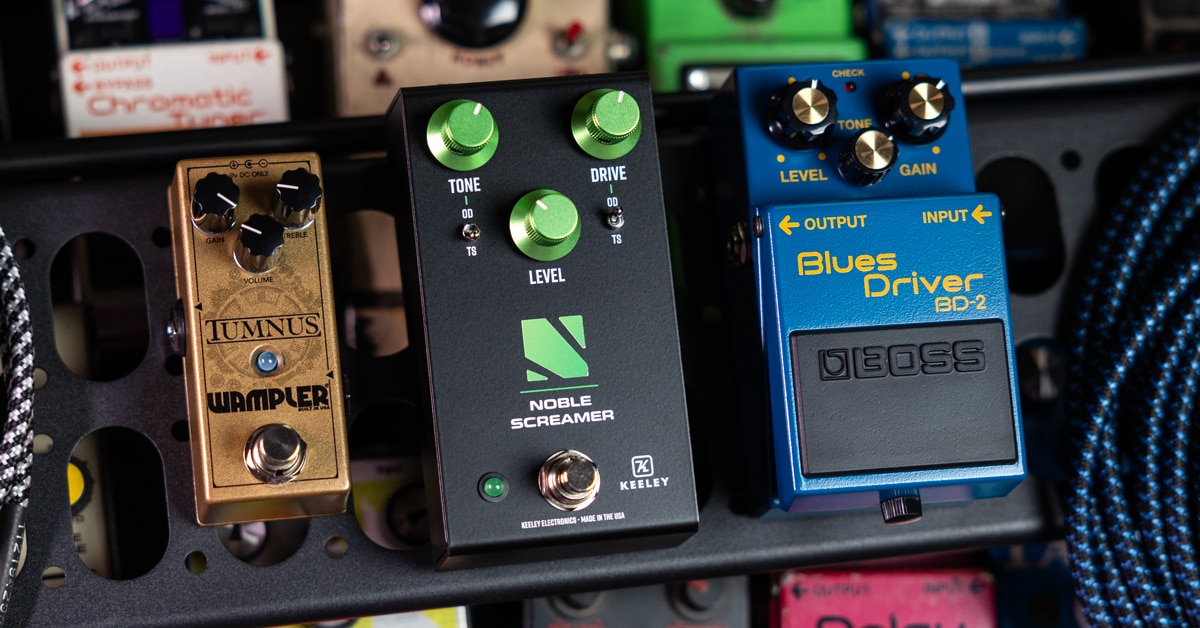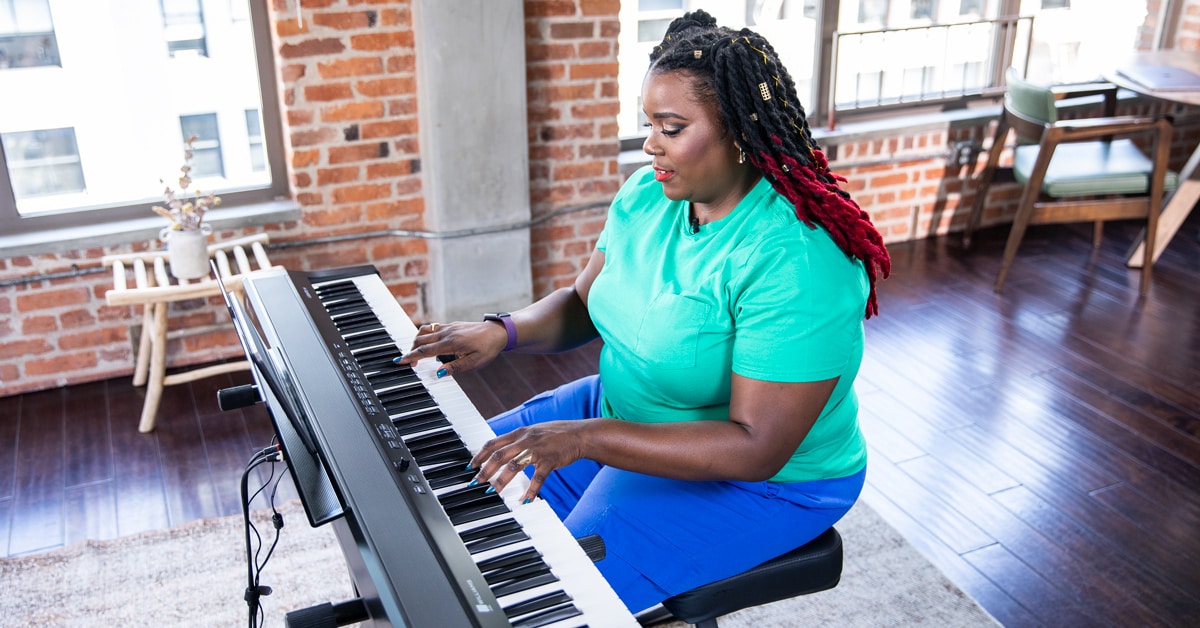The Williams team didn’t simply want a sequel when they were developing the “IV” series of the popular Legato and Allegro digital pianos. They were far more interested in a rewrite, a whole new chapter and a glorious evolution. As a result, the Legato and Allegro IV project became an upgrade opus in which sounds were elevated, the speaker system redesigned, a new keybed developed, a USB interface added, the app enhanced—and more. Improvements even extended to accessories, such as a three-pedal controller, a padded and height-adjustable piano bench, and a sleek and sophisticated wooden stand. In this interview, Guitar Center Product Manager Jeff Laity takes you behind the curtain to share the development strategies that forged the brand-new Legato IV and Allegro IV keyboards—Williams’ latest and greatest development of what Laity calls “slab pianos.”
Where do the Williams Legato IV and Allegro IV sit in the line?
Jeff Laity: Williams has three categories of pianos. We have our digital grands, such as the Symphony Grand II and the Symphony Concert. We have our console pianos, which are the Rhapsody III and Overture III. And then, we have what are commonly referred to as “slab pianos” or “portable pianos,” and those are the Legato and Allegro. It’s really important for these keyboards to be compact, but still feel great, sound great and offer interactive features so that people can learn to play piano and continually grow and improve.
Are there any significant differences between the Legato IV and Allegro IV?
The most notable difference between the two is a weighted keyboard on the Allegro, whereas the Legato is non-weighted.
Can you tell us about the onboard sounds?
Both the Legato IV and Allegro IV have the same sound set. The acoustic piano is an Italian grand piano that we use across our line. We spent a long time tailoring those samples to sound great. The two electric pianos we use were completely remastered to offer an extremely wide dynamic range and exceptional high-frequency response. Both the Legato IV and Allegro IV offer a varied set of instruments—organs, choir, vibes, basses, strings, synth and so on—but we didn’t just choose them because they're fun to play. They were also selected because the sounds are great for splits and layers, such as playing bass with your left hand and piano with your right, or for textures where you want a piano blended with strings or a choir.
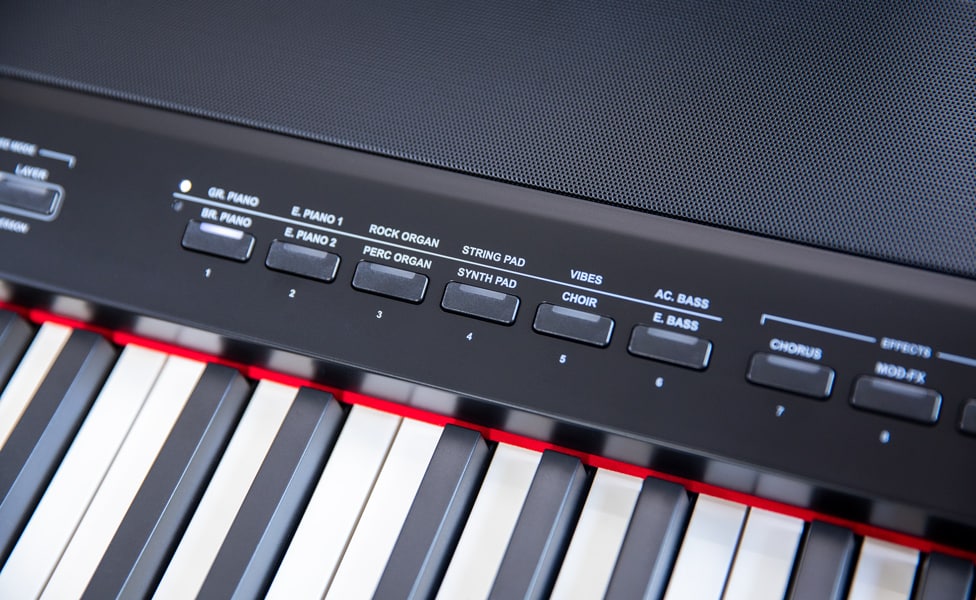
I was struck by how the built-in speakers projected the sounds with so much detail and nuance.
The speakers are a completely new design, and they’re really a departure from what is included in other digital pianos. We actually built an internal speaker box that’s ported—like a studio monitor—and put in two high-quality drivers. Those woofers and tweeters aren’t just screwed in near the top of the keyboard frame. There’s also DSP available to tune the response. The sound quality that comes out of the piano is a big step forward for digital pianos, and getting there was a very important part of this project.
Has there been an upgrade in the keybeds from the prior generation of Williams pianos?
It's an all-new keybed in the Allegro IV, and this is actually the first keyboard we've put it in. It's graded, which means there's more resistance at the bottom of the keyboard than at the top of the keyboard—which is the same way a grand piano keybed works. It’s a tighter response, and it’s slightly heavier than the keybed in the Allegro III.
Now, some people do prefer a non-weighted feel. It can be faster to play, and some younger keyboardists find it easier to play a piano without weighted keys. It’s not really that one keybed is for beginners and the other is for advanced players. It’s more that there are two options to accommodate the feel that someone wants.
One of the biggest differences between the Allegro IV and Legato IV and previous models is Bluetooth functionality. What will that mean for players?
Bluetooth audio is a great way to connect to mobile devices, such as phones and tablets. With the latest models, you can hear audio from your mobile device in either the keyboard’s onboard speakers, or through the headphone output, so you can easily play along with a YouTube lesson or music from your own library. Bluetooth MIDI is useful for communicating with apps, such as our Williams app, which we've updated to work with this new generation of keyboards.
You can also use the keyboard as a Bluetooth speaker to listen to music casually.
Absolutely.
What does the USB connection offer?
The USB connection functions as a USB audio/MIDI interface, and it’s built right into the piano, which is great for people who want to record into their favorite DAW, use notation software or play virtual instruments. Whether you’re using Apple Logic, Avid Pro Tools or Apple GarageBand, the onboard USB interface offers incredible functionality. As a result, the Legato IV and Allegro IV are not only great recording pianos, they’re also great MIDI controllers.
While the Legato and Allegro share the same sound sets, I did notice there are some differences in the panel controls.
The Allegro has some more dedicated buttons for the effects. The Legato, in some cases, requires you to press two buttons at once to turn on a function. There are also dedicated controls for the Allegro IV’s 2-band EQ, which is really powerful for changing the characters of the two pianos to get everything from dark film score sounds to extremely bright ’80s pop. The Legato has the same EQ, but it doesn’t have dedicated controls. However, you can access EQ and other features from our Williams app.
While we’re talking about the app, I want to make it clear that our goal was to make the pianos easy to use without the app. The app simply gives players a bigger picture of what’s going on in the piano. For example, the app lets you see where the keyboard split is located, and it shows exactly which sounds are assigned to which keyboard zones. You can even adjust the velocity curve—which changes the responsiveness of the keyboard—to accommodate players with softer or heavier playing styles. Again, you can do that from the piano, but the app makes it very easy.
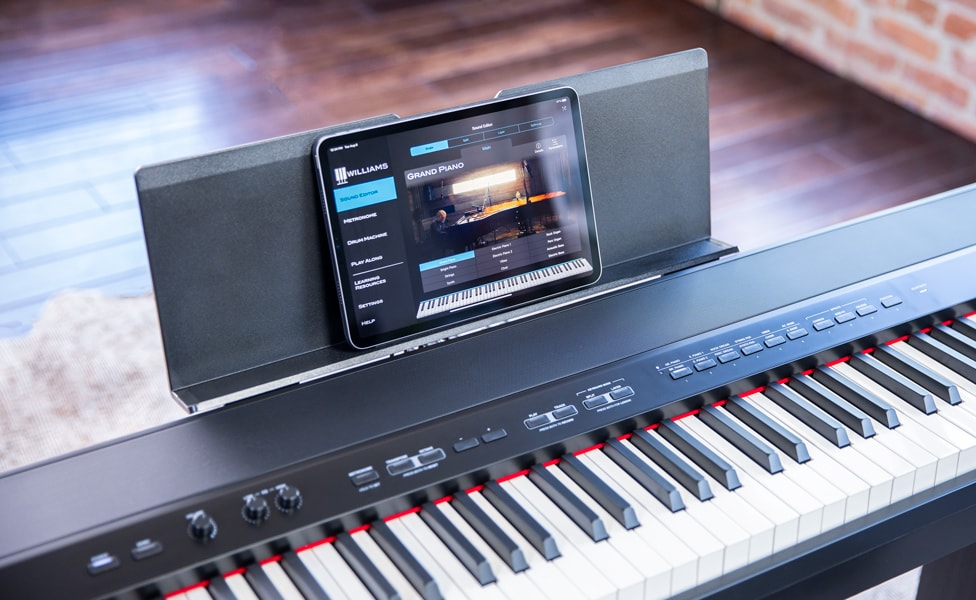
What else does the app offer players?
There's a metronome, as well as a drum machine with presets—you can’t program beats or anything on it. Personally, I like playing along with a drum beat, rather than a metronome click. It’s more inspiring to practice when I have something musical to play along with.
The app also has a play-along feature, which allows you to play songs from your music library and slow them down without changing the pitch. Players can learn a lick or a song note-by-note at half speed, and then slowly speed it up until they're playing along with it at full tempo. It's a great feature for figuring out new music and becoming a better player.
It sounds like these are great practice tools to have at your disposal in between your weekly Guitar Center lesson.
Oh, yeah.
Speaking of lessons, there’s a built-in lesson mode, right?
The lesson mode splits the keyboard in half, and both zones have the same range. So, you can sit side-by-side with a music teacher, and each of you can play in the same octave range. There are also two headphone jacks so that a teacher and student can play together without anyone else hearing the lesson.
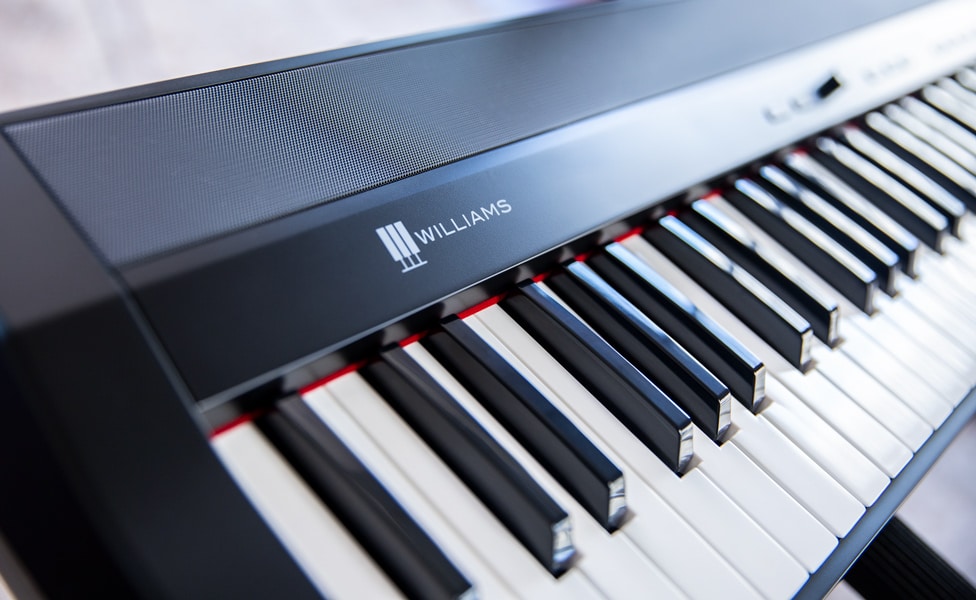
The Allegro IV also offers a built-in recorder.
It’s a 2-track recorder, so you can record one part, and then overdub a second part—which is great for writing and arranging songs.
Do you have a favorite Legato IV and Allegro IV sound?
I think the new electric pianos sound great. When you really dig in, you get that vintage honk, and when you play more softly, there’s that very mellow, jazzy sound. It’s a lot of fun.








